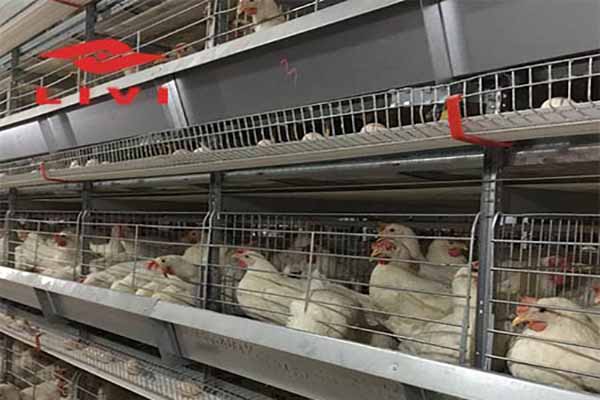Egg Production Cage System for 20,000 Layers in Tanzania: A Comprehensive Guide
Introduction to the Egg Production Cage System
The egg production cage system for 20,000 layers in Tanzania is an essential component for any modern poultry farm aiming for high productivity and efficient egg collection. This system not only ensures the comfort of the hens but also facilitates easy maintenance and egg collection. The following guide will provide an overview of the key aspects to consider when setting up an egg production cage system for this capacity.
Design and Layout of the Cage System
When designing an egg production cage system for 20,000 layers, it is crucial to ensure that the layout allows for proper air circulation, adequate space for the hens, and efficient egg collection. The typical design includes:
- Cage Capacity: Each cage should be designed to accommodate a single hen, providing them with ample space to move around and lay eggs comfortably.
- Layering and Nesting Boxes: Nesting boxes should be positioned at the front of each cage to encourage hens to lay eggs in a specific area.
- Feeding and Watering Stations: Consistent access to feed and water is crucial for maintaining hen health and productivity.
- Airflow and Ventilation: Proper ventilation is necessary to maintain optimal humidity and temperature levels within the shed.
Technology and Equipment
The selection of technology and equipment is vital in ensuring the success of an egg production cage system. Key components include:
- Automated Feeders and Waterers: These help in providing consistent feed and water, which is essential for high egg production.
- Egg Collection System: An efficient system for collecting eggs regularly is necessary to maintain hygiene and prevent spoilage.
- Environmental Control System: This system should allow for monitoring and adjusting temperature, humidity, and lighting conditions within the shed.
Energy Efficiency and Sustainability
In Tanzania, where electricity costs can be high, it is essential to consider energy efficiency when setting up an egg production cage system. This can be achieved through:
- Solar Power: Utilizing solar panels to power lighting, ventilation, and other equipment can reduce energy costs significantly.
- Airflow Optimization: Properly designed airflow can minimize the need for additional heating or cooling, thus reducing energy consumption.
Cost-Benefit Analysis
An investment in an egg production cage system for 20,000 layers in Tanzania should be evaluated based on the following factors:
- Initial Investment: The cost of purchasing and installing the cage system, equipment, and technology.
- Operational Costs: Energy, labor, and maintenance expenses.
- Revenue Generation: Expected egg production and potential profit margins.
With proper planning and execution, an egg production cage system for 20,000 layers can be a lucrative venture in Tanzania.
Conclusion
Investing in an egg production cage system for 20,000 layers in Tanzania requires careful consideration of design, technology, and sustainability factors. By following the guide provided above, poultry farmers and investors can make informed decisions to maximize their profits and contribute to the growth of the poultry industry in Tanzania.
Contact Us for Free Consultation
For more information on setting up an egg production cage system for 20,000 layers or to receive a free mechanical design and equipment quotation, please feel free to leave a comment below or contact us directly.





